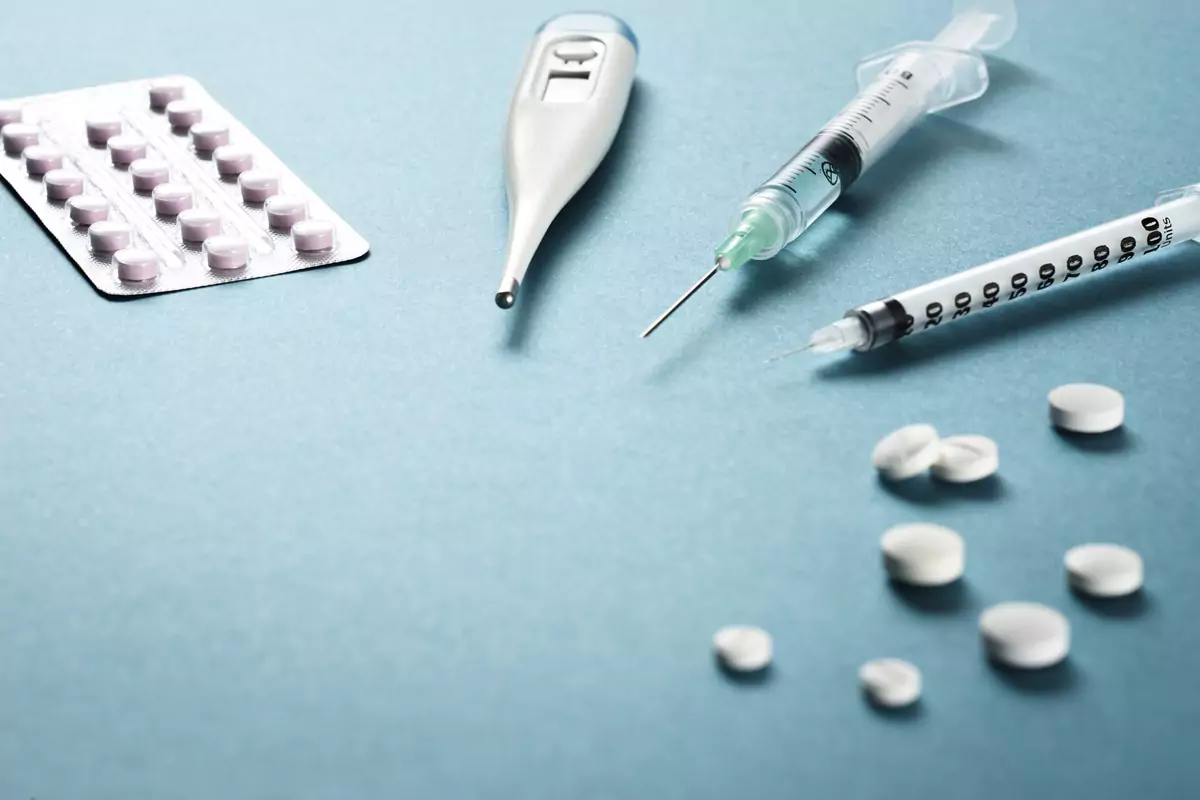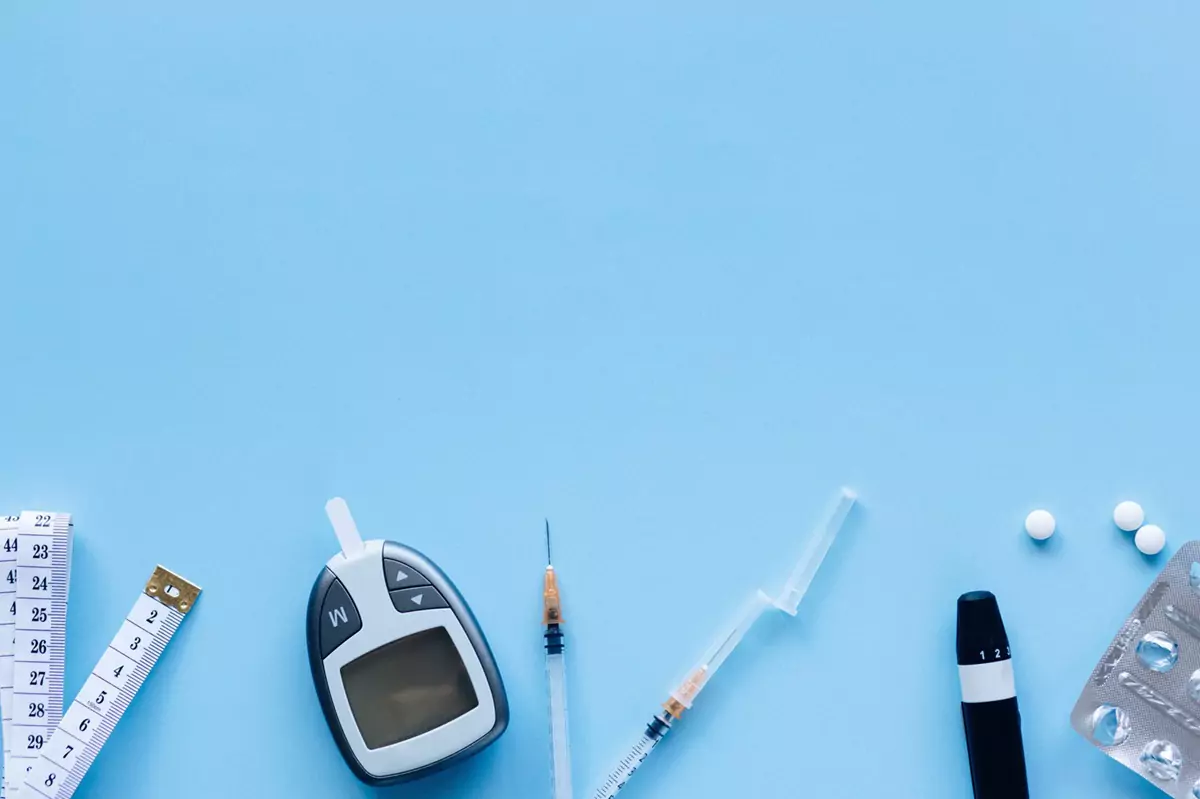





Farxiga Side Effects You Need to Know


Table of Contents
- What Are The Common Side Effects Of Farxiga?
- What Are The Bearable Side Effects Of Farxiga?
- What Are The Dangerous Side Effects Of Farxiga?
- Dehydration:
- Kidney problems:
- Amputations:
- Orthostatic hypotension
- Other Considerations
- FAQs About Farxiga's Side Effects
- FAQ 1: Do the Side Effects of Farxiga Go Away?
- FAQ 2: What Medications Should Not Be Taken With Farxiga?
- FAQ 3: How Do You Know if Farxiga Is Working?
- FAQ 4: How Long Does It Take To See the Effects of Farxiga?
- FAQ 5: What Are the Dangers of Taking Farxiga?
- Side Effects Explained
- Weight Loss
- Low Blood Sugar Level
- Dehydration
- Genital-related Side Effects
- Allergic Reaction
- Conclusion
- About the Author:
Are you considering taking Farxiga for your type 2 diabetes? Are you already on Farxiga? Before starting treatment, one must be aware of the potential side effects of this medication. Farxiga, also known as dapagliflozin, is a member of the SGLT2 inhibitor class of drugs. This medication works by helping the kidneys remove excess sugar from the body through the urine. While Farxiga can be an effective treatment option for many people, it's essential to be aware of the potential side effects.
Speak with your diabetes doctor if you experience any unusual symptoms. Some common side effects of Farxiga include urinary tract infections, genital infections, and low blood pressure. Farxiga may also cause serious side effects such as dehydration, kidney problems, or amputations in rare cases. To reduce the risk of side effects, it's essential to follow your doctor's instructions.
Farxiga Overview Farxiga (dapagliflozin) is a prescription medication used to treat type 2 diabetes. Farxiga is taken once daily by mouth, usually in the morning. Farxiga is used with other diabetes medications or as monotherapy (used alone). It is important to follow your doctor's instructions for taking Farxiga.
You also need to watch your blood sugar levels while using the medication. It is important to note that Farxiga is not a cure for diabetes and should be used with a healthy diet and exercise program. It is also important to visit your diabetes doctor for monitoring and follow-up care. Farxiga can be an effective treatment for type 2 diabetes as directed by a healthcare provider.
What Are The Common Side Effects Of Farxiga?
What are the side effects of Farxiga? Farxiga (dapagliflozin) is a prescription medication belonging to a class of drugs known as sodium-glucose co-transporter 2 (SGLT2) inhibitors, which work by helping the kidneys remove excess sugar from the body through the urine.
While Farxiga can be an effective treatment for type 2 diabetes, it can also cause side effects in some people. Common side effects of Farxiga may include frequent urination, diarrhea, nausea, and urinary tract infections.
These side effects are usually mild and go away after a few days of taking the medication. Some people get UTIs often, which may make the medicine unfavorable. Other common side effects of Farxiga may include headache, upper respiratory tract infection, and genital fungal infections.
What Are The Bearable Side Effects Of Farxiga?
Some common side effects of Farxiga are considered bearable, meaning that they may be annoying but are generally not serious and may go away on their own with time. These side effects include:
Headache: Headaches are a common side effect of Farxiga. If you experience a headache while taking Farxiga, try drinking plenty of fluids, getting enough rest, and avoiding activities that may cause strain on your eyes. If the headache persists or is severe, speak with a diabetes doctor.
Nausea: Nausea is the feeling of wanting to vomit. It can be caused by many things, including medication. If you experience nausea while taking Farxiga, try eating small, frequent meals and avoiding foods that may be difficult to digest. If nausea persists or is severe, speak with a healthcare provider.
Diarrhea: Diarrhea is the frequent passage of loose or watery stools. It can be caused by many things, including Dapaflifozin medication. If you experience diarrhea while taking Farxiga, try drinking plenty of fluids and avoiding foods that may be difficult to digest. If diarrhea persists or is severe, speak with a healthcare provider.
Urinary Tract Infections Urinary tract infections (UTIs) are also a common side effect of Farxiga for people with diabetes. UTIs can occur when bacteria enter the urinary tract and cause an infection. Symptoms of a UTI may include pain or burning while urinating, frequent urges to urinate, and cloudy or foul-smelling urine.
UTIs can be treated with antibiotics prescribed by a healthcare provider. Other common side effects of Farxiga include genital infections and low blood pressure. While these side effects may be more bothersome than those listed above, they are generally not serious and can be managed with the help of your diabetes doctor.
What Are The Dangerous Side Effects Of Farxiga?
How safe is Farxiga? In rare cases, Farxiga may cause dangerous side effects. It's essential to speak with a healthcare provider immediately if you experience any of the following symptoms while taking Farxiga:
Dehydration:
Dehydration occurs when the body does not have enough fluids. Symptoms of dehydration include thirst, dry mouth, dark urine, and fatigue. Dehydration can be serious and may need medical treatment.
Kidney problems:
Farxiga may cause kidney problems, including a decrease in kidney function or kidney failure. Symptoms of kidney problems may include swelling in the legs and ankles, difficulty urinating, and a decrease in urine. Kidney problems can be severe and may need medical treatment.
Amputations:
Farxiga may increase the risk of amputations, particularly amputations of the toes, feet, or legs. This risk is higher in people with certain medical conditions, such as nerve damage or poor blood flow to the legs. If you experience any unusual symptoms in your toes, feet, or legs while taking Farxiga, you must speak with a healthcare provider.
Other dangerous side effects of Farxiga may include allergic reactions and severe skin reactions. Symptoms of an allergic reaction may include hives, rash, itching, difficulty breathing, or swelling of the face, lips, tongue, or throat. Severe skin reactions may include redness, blistering, or skin peeling. If you experience these symptoms while taking Farxiga, it's important to seek medical attention immediately.
Orthostatic hypotension
One of the potential side effects of Farxiga is orthostatic hypotension. This can occur because Farxiga helps the kidneys remove glucose (sugar) from the body through the urine, which can lead to dehydration. Dehydration can cause a decrease in blood volume, leading to low blood pressure.
Orthostatic hypotension can be more common in older people or with other conditions that affect blood pressure, such as heart or kidney problems. It can also be more common in people who are taking other medications that can cause low blood pressure, such as diuretics or blood pressure medications.
You must speak with your healthcare provider if you experience orthostatic hypotension while taking Farxiga. They may recommend ways to manage the side effect, such as drinking plenty of fluids, wearing compression stockings, or making adjustments to your medication regimen. It is also essential to report any dizziness, lightheadedness, or fainting episodes to your doctor.
Other Considerations
Farxiga may interact with certain types of diuretics, such as loop diuretics and thiazide diuretics. These interactions can increase the risk of dehydration and low blood pressure. To avoid potential drug interactions, it is important to inform your doctor about all medications you are taking, including over-the-counter drugs and supplements.
Farxiga may also interfere with specific lab tests, including tests for urine glucose and urine ketones as well as glycomark tests. If you are scheduled to have any lab tests while taking Farxiga, it is important to inform your doctor. They may need to adjust the timing of the tests or use alternative testing methods to ensure accurate results.
In general, it is always important to inform your doctor about all medications you are taking and any potential side effects or concerns you have. They can help you manage any possible drug interactions and ensure that your treatment plan is safe and effective. If you do not want to take Farxiga and want to consider a more natural or homeopathic approach, consider SugarMD Super Berberine or SugarMD Advanced Glucose Support which are proven effective and have very good reviews.
FAQs About Farxiga's Side Effects
Farxiga is a medication used to treat type 2 diabetes, but like all medications, it can have side effects. We will answer some frequently asked questions about the side effects of Farxiga/dapagliflozin, including whether they go away, what medications should not be taken with Farxiga, how to know if Farxiga is working, how long it takes to see the effects of Farxiga and the dangers of taking Farxiga. Understanding these potential side effects can help you make informed decisions about your treatment and manage any side effects you may experience.
FAQ 1: Do the Side Effects of Farxiga Go Away?
The side effects of Farxiga (dapagliflozin) may vary from person to person. Some people may experience side effects that go away after a few days or weeks of taking the medication, while others may experience longer-lasting or more severe side effects.
If you experience severe side effects or they do not go away, it is essential to contact your diabetes doctor. They can help you determine the best course of action, which may include adjusting your dosage or switching to a different medication.
FAQ 2: What Medications Should Not Be Taken With Farxiga?
It is important to tell your healthcare provider about all medications you are taking, including prescription and over-the-counter drugs, supplements, and herbal remedies. Some medications may interact with Farxiga and cause dangerous side effects or make the medication less effective. Some examples of medicines that may interact with Farxiga include:
- Other diabetes medications, such as insulin or metformin
- Blood pressure medications, such as angiotensin-converting enzyme (ACE) inhibitors or angiotensin receptor blockers (ARBs)
- Water pills (diuretics)
- Nonsteroidal anti-inflammatory drugs (NSAIDs)
It is important to follow your healthcare provider's instructions and not take any other medications without consulting them first.
FAQ 3: How Do You Know if Farxiga Is Working?
Farxiga (dapagliflozin) is a medication used to treat type 2 diabetes. It works by increasing the amount of sugar that is eliminated in the urine, which can help lower blood sugar levels. You can check with your healthcare provider to determine how well Farxiga is working for you.
They may recommend regular blood sugar monitoring and A1C tests to check your blood sugar control. If your blood sugar levels are within the normal range and you are experiencing reasonable blood sugar control, Farxiga is likely working well for you.
FAQ 4: How Long Does It Take To See the Effects of Farxiga?
The effects of Farxiga (dapagliflozin) may vary from person to person. Some people may see an improvement in blood sugar control within a few days of starting the medication, while others may take longer to see the effects.
It is essential to follow your healthcare provider's instructions and continue taking the medication as prescribed, even if you do not see immediate improvements. It may take several weeks or even months to see the full effects of Farxiga on your blood sugar control.
FAQ 5: What Are the Dangers of Taking Farxiga?
Like all medications, Farxiga (dapagliflozin) can cause side effects. Some common side effects of Farxiga include urinary tract infections, yeast infections, and back pain. Although rare, more severe side effects may include low blood sugar (hypoglycemia), kidney problems, and an increased risk of bone fractures.
If you experience any side effects while taking Farxiga, it is essential to contact your doctor. They can help you determine the best course of action and whether the medication's benefits outweigh the risks.
It is also essential to follow your healthcare provider's instructions and take Farxiga as prescribed to minimize the risk of side effects

If you do not want to take Farxiga and want to consider a more natural or homeopathic approach, consider SugarMD Super Berberine or SugarMD Advanced Glucose Support which are proven effective and have very good reviews.
Side Effects Explained
We will explore the potential side effects of Farxiga (dapagliflozin), a medication used to treat type 2 diabetes. Understanding these side effects can help you make informed decisions about your treatment and manage any side effects you may experience. We will discuss side effects such as weight loss, low blood sugar, dehydration, genital-related side effects, and allergic reactions.
Weight Loss
One potential side effect of Farxiga (dapagliflozin) is weight loss. This may occur because the medication increases the amount of sugar eliminated in the urine, which can lead to a loss of calories. Farxiga Weight loss may be a desired side effect for some people, but it is important to talk to your healthcare provider about any significant changes in weight while taking Farxiga.
How to Manage Farxiga Weight Loss
If you are taking Farxiga and are interested in managing your weight, there are several strategies you can try:
Eat a healthy, balanced diet:
A healthy diet is important for managing your weight and blood sugar levels. Focus on eating plenty of fruits, vegetables, whole grains, and lean proteins. Avoid processed and sugary foods as much as possible.
Exercise regularly:
Regular physical activity can help you burn calories and improve your overall health. Aim for at least 150 minutes of moderate-intensity exercise or 75 minutes of vigorous-intensity exercise per week.
Drink plenty of water:
Staying hydrated is essential for overall health and can also help with weight management. Aim for 8-8 ounces of water per day.
Consider working with a healthcare professional:
If you are having trouble losing weight or managing your blood sugar levels, consider working with a healthcare professional, such as a dietitian or diabetes educator. They can provide personalized guidance and support to help you reach your goals. It's important to note that Farxiga is not a weight loss drug and should not be used solely to lose weight.
Low Blood Sugar Level
Farxiga may cause low blood sugar (hypoglycemia), especially in people who also take insulin or other diabetes medications that lower blood sugar. Symptoms of low blood sugar may include headache, dizziness, confusion, hunger, sweating, and tremors.
How to manage Low Blood Sugar Level
Symptoms of low blood sugar include feeling hungry, shaking, sweating, dizziness, and trouble concentrating. Low blood sugar can lead to more serious complications, such as seizures or loss of consciousness if left untreated. To manage low blood sugar while taking Farxiga, there are several strategies can try:
- Carry fast-acting glucose tablets or gels with you: These can help raise your blood sugar levels quickly if you start to feel hypoglycemic.
- Eat or drink something sugary: This can help raise your blood sugar levels quickly. Good options include hard candy, fruit juice, or glucose tablets.
- Check your blood sugar levels regularly: Use a blood sugar meter to check your levels and see how they respond to different foods and activities. This can help you identify patterns and make adjustments to your treatment plan as needed.
- Talk to your healthcare provider: If you are experiencing frequent or severe episodes of low blood sugar, it's important to discuss this with your healthcare provider. They may need to adjust your medication dosage or recommend other strategies to help manage your blood sugar levels. This may include adjusting insulin or other meds.
It's important to follow your healthcare provider's instructions for managing your blood sugar levels and to be aware of the signs and symptoms of low blood sugar. If you are having trouble managing your blood sugar levels, you must talk to your healthcare provider for further guidance and support.
Dehydration
Farxiga may cause dehydration because it increases the amount of sugar eliminated in the urine. This can lead to a loss of fluids and electrolytes, which can cause symptoms such as thirst, dry mouth, and fatigue.
How to manage dehydration:
Symptoms of dehydration include thirst, dry mouth and throat, fatigue, and dark yellow urine. If left untreated, dehydration can lead to severe complications, such as kidney failure or heat stroke. To manage dehydration, there are several strategies you can try:
Drink fluids Drink plenty of water, electrolyte-rich sports drinks, or other fluids to help replenish lost fluids. Avoid caffeinated beverages and alcohol, as they can increase fluid loss.
Eat hydrating foods Fruits and vegetables with high water content, such as watermelon, cucumbers, and strawberries, can help keep you hydrated.
Take frequent sips of fluids. Sipping fluids throughout the day can help prevent dehydration more effectively than drinking large amounts all at once.
Wear loose, cool clothing Hot weather and heavy exercise can increase your risk of dehydration. Wearing loose, cool clothing and taking frequent breaks can help reduce your risk.
Consider using oral rehydration solutions. These solutions contain a combination of water, electrolytes, and carbohydrates that can help replenish fluids and electrolytes lost due to diarrhea, vomiting, or other conditions.
Genital-related Side Effects
Farxiga may cause genital-related side effects in both men and women. In men, Farxiga may cause swelling or pain in the testicles. In women, it may cause vaginal discharge or yeast infections. You must contact your healthcare provider if you experience any of these side effects while taking Farxiga.
How to Manage Genital-Related Side Effects If you are experiencing genital-related side effects while taking Farxiga, there are several strategies you can try to manage them:
Drink plenty of fluids: Staying hydrated can help flush bacteria out of the urinary system and may help prevent UTIs. Aim for 8-8 ounces of water per day.
Practice good hygiene: Washing the genital area regularly and using unscented soap can help prevent genital irritation and infections.
Wear loose-fitting clothing: Tight clothing can cause irritation and increase the risk of infections. Wear loose-fitting, breathable clothing to help reduce irritation.
Avoid douching: Douching can disrupt the natural balance of bacteria in the genital area and increase the risk of infections.
Consider using a different form of birth control: If you are experiencing genital-related side effects while using a hormonal form of birth control, such as a contraceptive pill or patch, consider switching to a non-hormonal form, such as a copper IUD or condoms. If you are experiencing persistent or severe genital-related side effects while taking Farxiga, it's important to speak with your healthcare provider.
Allergic Reaction
Like all medications, Farxiga can cause allergic reactions in some people. Symptoms of an allergic reaction may include rash, itching, difficulty breathing, and swelling of the face, lips, tongue, or throat. If you experience any of these symptoms while taking Farxiga, you must stop taking the medication and contact your healthcare provider immediately. They can help you determine the cause and recommend treatment. An allergic reaction can be life-threatening in severe cases and may require emergency medical attention.
How to manage Allergic Reaction To manage an allergic reaction caused by Farxiga, your healthcare provider may recommend one or more of the following treatment options:
Stop taking Farxiga If you are experiencing an allergic reaction to Farxiga, your healthcare provider will likely recommend that you stop taking the medication immediately.
Use over-the-counter or prescription medications. Depending on the severity of your symptoms, your healthcare provider may recommend over-the-counter antihistamines or prescription medications to help reduce swelling and relieve itching.
Use corticosteroids If your allergic reaction is severe, your healthcare provider may prescribe corticosteroids, such as prednisone, to help reduce inflammation and swelling.
Administer epinephrine In severe cases of an allergic reaction, your healthcare provider may recommend using epinephrine, also known as an EpiPen, to help open airways and reduce swelling.
How Long do Farxiga Side Effects Last? The duration of Farxiga (dapagliflozin) side effects can vary depending on the specific side effect and the individual. Some side effects may go away after a few days of taking the medication, while others may persist or occur more frequently with long-term use.
Common side effects of Farxiga, such as diarrhea, nausea, and urinary tract infections, are usually mild and tend to go away after a few days of taking the medication. You must speak with your healthcare provider if these side effects persist or are severe.
They can recommend ways to manage the side effects or adjust your medication dosage. Other side effects of Farxiga, such as kidney problems, low blood sugar, and allergic reactions, may be more severe and require medical attention.
Conclusion
Farxiga (dapagliflozin) can be effective in helping to lower blood sugar levels, but it can also cause a range of side effects. Some common side effects of Farxiga include genital-related side effects, such as yeast infections and urinary tract infections, low blood sugar, dehydration, and allergic reactions.
It's essential to be aware of these side effects and to discuss them with your doctor. They can help you manage any side effects you may experience and determine if Farxiga is the proper treatment for you. If you experience severe or persistent side effects while taking Farxiga, you must seek medical attention immediately.
About the Author:
Who is Dr. Ergin? Dr. Ahmet Ergin is an endocrinologist interested in and passionate about diabetes care. Dr. Ergin earned his medical degree with honors at Marmara University School of Medicine in Istanbul, Turkey. Then, he completed his internal medicine residency and endocrinology fellowship at Cleveland Clinic in Cleveland, Ohio.
He is a board-certified Internal Medicine and Endocrinology, diabetes, and metabolism physician. He is also a certified diabetes education specialist. Disclaimer: Any information on diseases and treatments on this website is for general guidance only and must never be a substitute for the advice your doctor or other qualified healthcare professional provides. Always seek the advice of your physician or other qualified healthcare professional with questions you may have regarding your medical condition.
Written By Dr. Ahmet Ergin
462 total articles
Meet Dr. Ahmet Ergin, a highly skilled and dedicated endocrinologist with a passion for diabetes care. Dr. Ergin earned his medical degree with honors from Marmara University in Istanbul. He completed internal medicine residency and endocrinology fellowship at Cleveland Clinic. Dr. Ergin is board-certified in Internal Medicine, Endocrinology, Diabetes, and Metabolism due to his vast medical expertise. He's a certified diabetes educator, author of “The Ultimate Diabetes Book,” and founder of “the SugarMD YouTube channel.” Dr. Ergin offers exceptional diabetes care to his patients in Port Saint Lucie, FL, helping them manage effectively. For a closer look into his insights and experiences, connect with Dr. Ahmet Ergin on LinkedIn, Instagram, and YouTube.”
Disclaimer: These statements have not been evaluated by the Food and Drug Administration. Information on this website isn't intended to treat, cure or prevent any disease. Discuss with your doctor and do not self-treat.
Products











